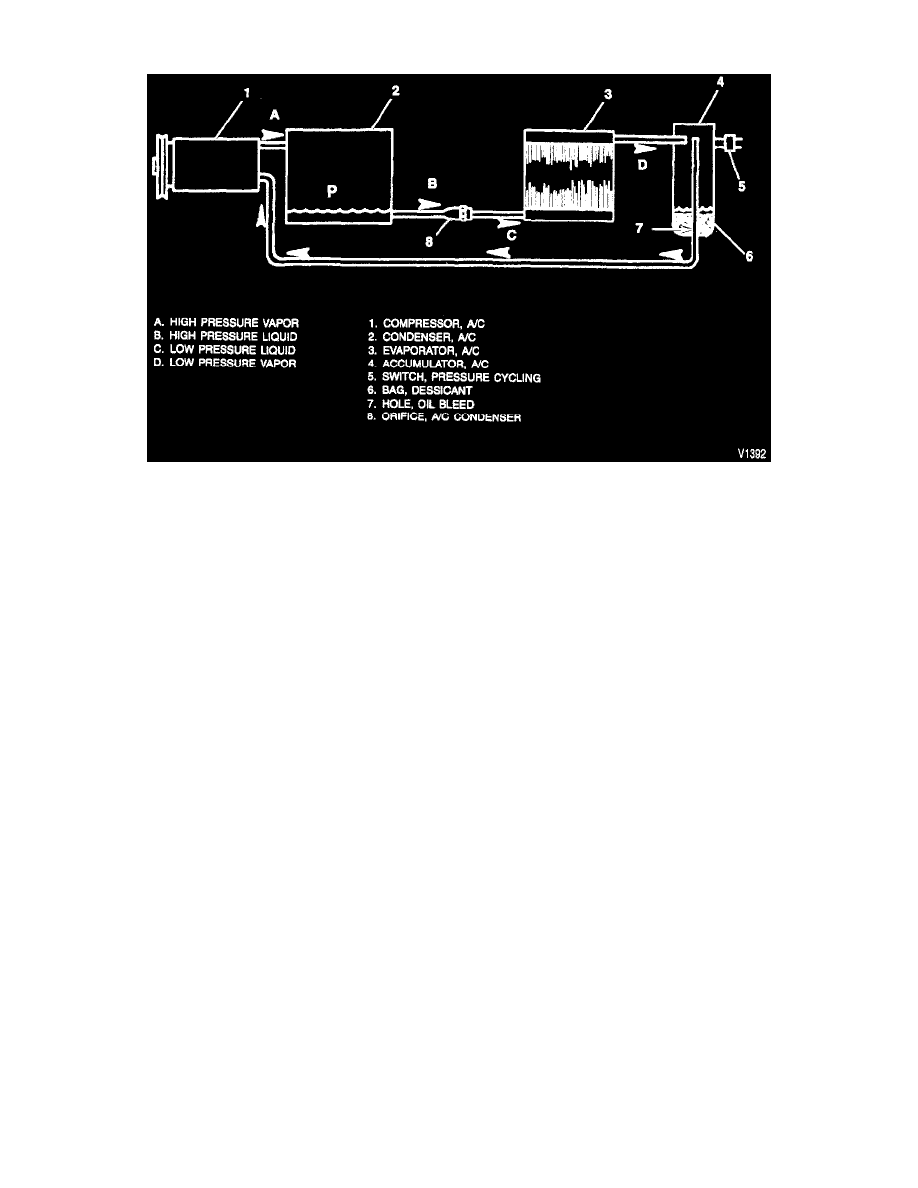S10/T10 Blazer 4WD V6-262 4.3L VIN Z (1994)

Expansion Block/Orifice Tube: Description and Operation
A/C System Components
The Cycling Clutch Orifice Tube (CCOT) refrigeration system is designed to cycle a compressor on and off to maintain desired cooling and to prevent
evaporator freeze-up. Passenger compartment comfort is maintained by selecting mode, fan speed, and air temperature on the control assembly (see
accompanying figure).
Control of the refrigeration cycle (on and off operation of the compressor) is done with a switch which senses low side pressure as an indicator of
evaporator pressure. The cycling pressure switch is the freeze protection device in the system and senses refrigerant pressure on the suction side of the
system. The switch is located on a standard low-side service fitting. During air temperatures of 16-26°C (6O-8O°F), the equalized pressures within the
charged air conditioning system will close the contacts of the pressure switch.
When an air conditioning mode is selected, voltage is supplied to the compressor clutch coil. As the compressor reduces the evaporator pressure to
approximately 175 kPa (25 psi), the pressure switch will open, de-energizing the compressor clutch. As the system equalizes and the pressure reaches
approximately 315 kPa (46 psi), the pressure switch contacts close, re-energizing the clutch coil.
When the engine is turned off with the air conditioning system operating, the refrigerant in the system will flow from the high-pressure side of the
expansion tube (orifice) to the low-pressure side until the pressure is equalized. This may be detected as a hissing sound for 30 to 60 seconds and is a
normal condition.
